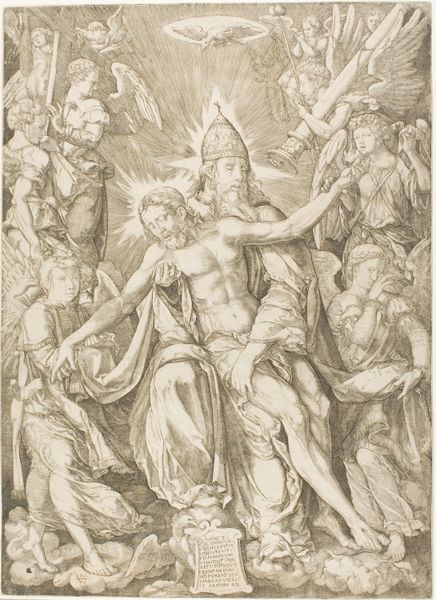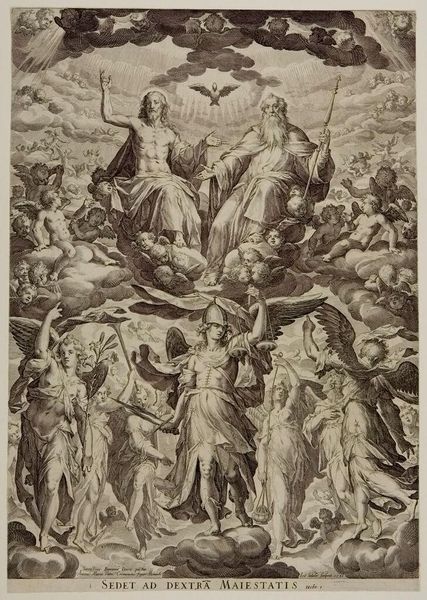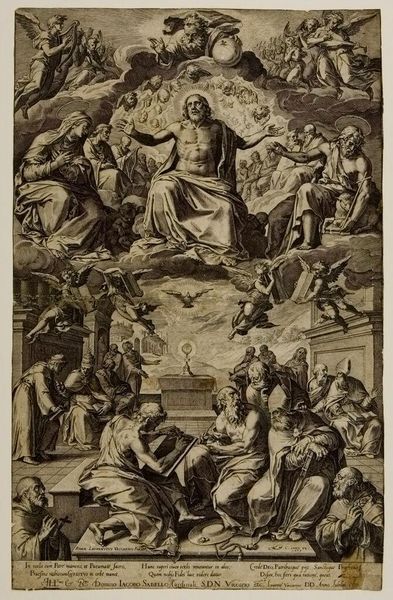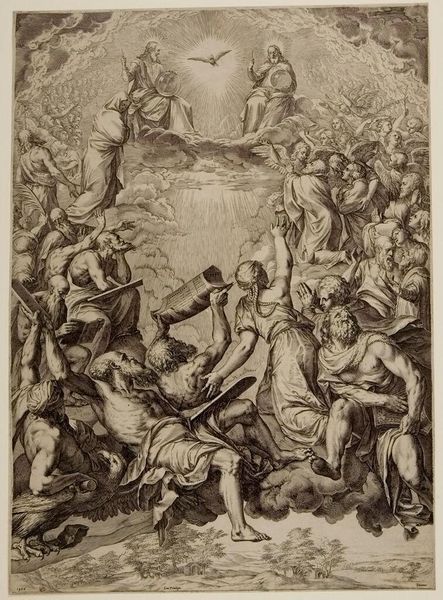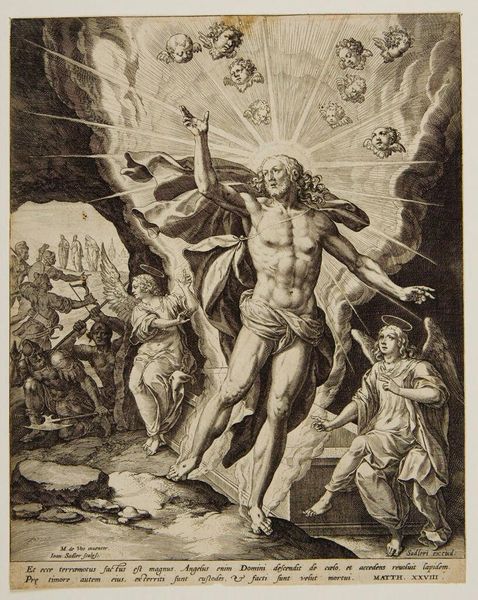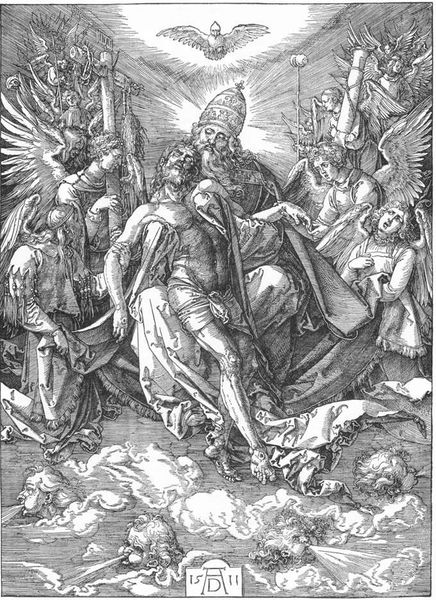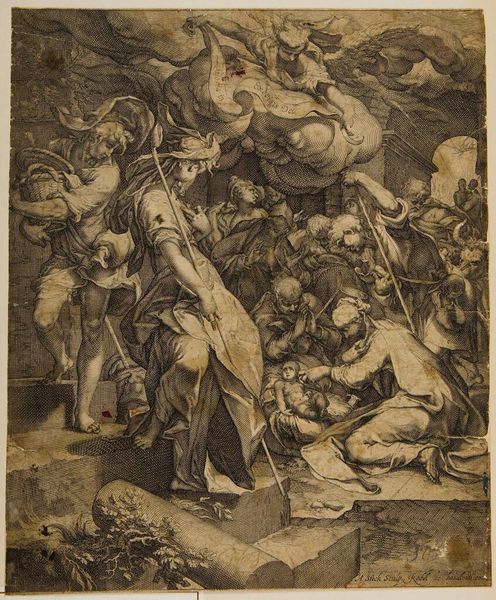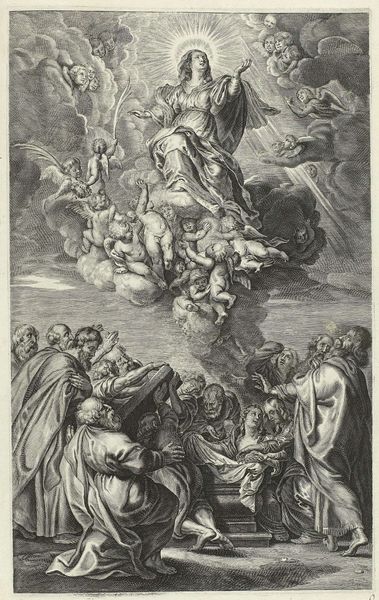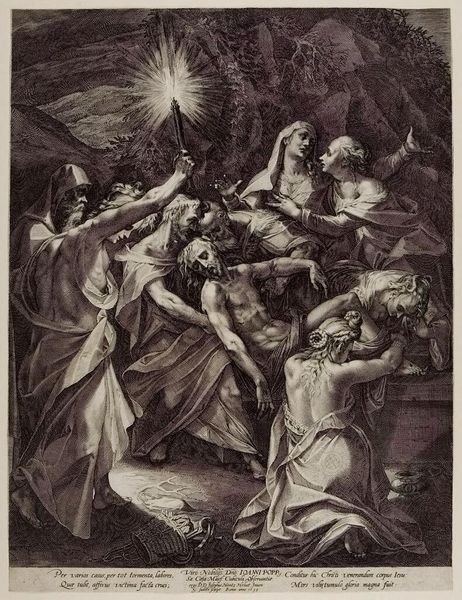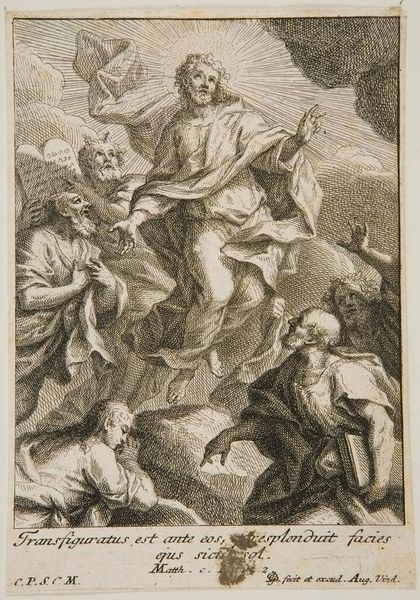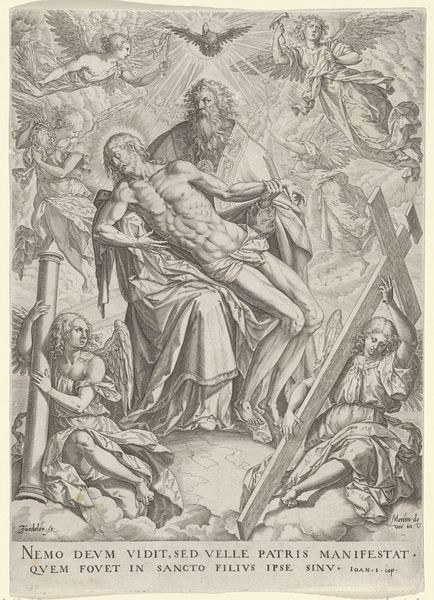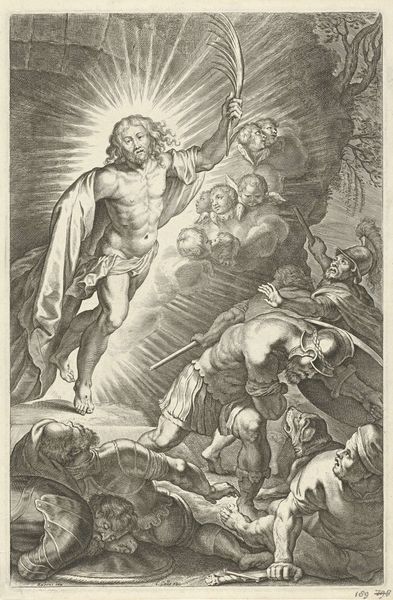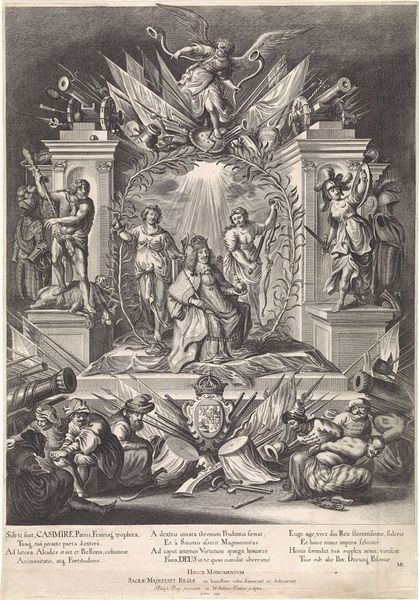
Dimensions: 42 Ã 30.3 cm (16 9/16 Ã 11 15/16 in.)
Copyright: CC0 1.0
Editor: This is Johann Ladenspelder's "Trinity," made sometime in the 16th century. It's a pretty small print, and the sheer number of figures packed into it is a little overwhelming. What do you make of this dense composition? Curator: It's certainly a product of its time. Consider the Reformation and its impact on religious imagery. Prints like these became vital tools. They offered a more accessible, often politically charged, visual language than large-scale altarpieces. Notice how the figures are arranged and what feelings this evokes. Editor: The overcrowding definitely feels purposeful, maybe to emphasize the heavenly host, or even a sense of divine pressure? I never thought about prints as having a political role. Curator: Exactly! Prints democratized images, fueling religious debates. It also highlights how art and access to it, shape our understanding of history and power. Editor: That's fascinating! I'll definitely look at prints differently now, appreciating their role in religious and social discourse.
Comments
No comments
Be the first to comment and join the conversation on the ultimate creative platform.
